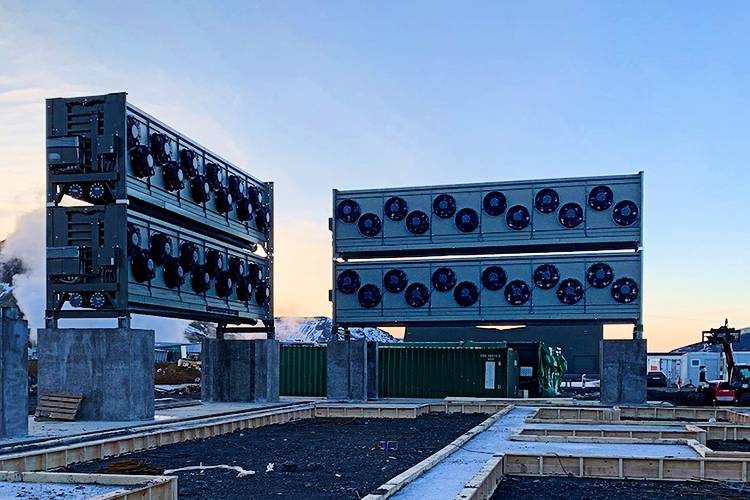Published in One Earth | Estimated reading time: 7 minutes
As global temperatures exceeded the Paris Agreement’s 1.5°C target through much of 2023, the world’s ability to stabilize the climate is under increasing scrutiny. A new analysis from MIT Energy Initiative researchers has identified critical engineering and economic challenges that may limit the effectiveness of direct air capture (DAC) technology – a method many climate plans count on for removing carbon dioxide from the atmosphere.
The study outlines four major hurdles facing DAC deployment. First is the sheer scale required – removing just one metric ton of CO2 requires processing the equivalent air volume of 720 Olympic swimming pools. The largest current DAC plant removes only 4,000 tonnes annually, yet many climate models assume removal of 5-40 gigatonnes (billion tonnes) per year.
Second is the massive energy demand. “Using coal-based electricity to drive an all-electric DAC process would generate 1.2 tonnes of CO2 for each tonne of CO2 captured,” the researchers note. At large scale, DAC could require over 40% of today’s global electricity production.
The third challenge involves finding suitable locations with access to clean energy, CO2 storage capabilities, and appropriate weather conditions. Finally, these factors drive costs far higher than the $100-200 per tonne assumed in many models. Current market prices for DAC-based carbon removal credits are around $1,500 per tonne.
“Given the high stakes of climate change, it is foolhardy to rely on DAC to be the hero that comes to our rescue,” the MIT team concludes, while still recommending continued development of the technology to support emissions reduction goals.
Glossary
- Direct Air Capture (DAC)
- A technology that removes carbon dioxide directly from ambient air using chemical processes.
- Carbon Credits
- Tradable certificates representing the right to emit one tonne of CO2, or the act of removing one tonne of CO2 from the atmosphere.
- Gigatonne
- A unit of measurement equal to one billion metric tonnes.
- Carbon Capture and Sequestration (CCS)
- Technology for capturing CO2 emissions from industrial sources and storing them underground.
Test Your Knowledge
How much air volume must be processed to remove one tonne of CO2?
Answer: The equivalent of 720 Olympic swimming pools (1.8 million cubic meters).
What is the current market price for DAC-based carbon removal credits?
Answer: Approximately $1,500 per tonne.
How much electricity would large-scale DAC deployment require?
Answer: Over 40% of current global electricity production.
What is the largest amount of CO2 currently removed by a single DAC plant annually?
Answer: 4,000 tonnes per year.
Enjoy this story? Subscribe to our newsletter at scienceblog.substack.com
If our reporting has informed or inspired you, please consider making a donation. Every contribution, no matter the size, empowers us to continue delivering accurate, engaging, and trustworthy science and medical news. Independent journalism requires time, effort, and resources—your support ensures we can keep uncovering the stories that matter most to you.
Join us in making knowledge accessible and impactful. Thank you for standing with us!

